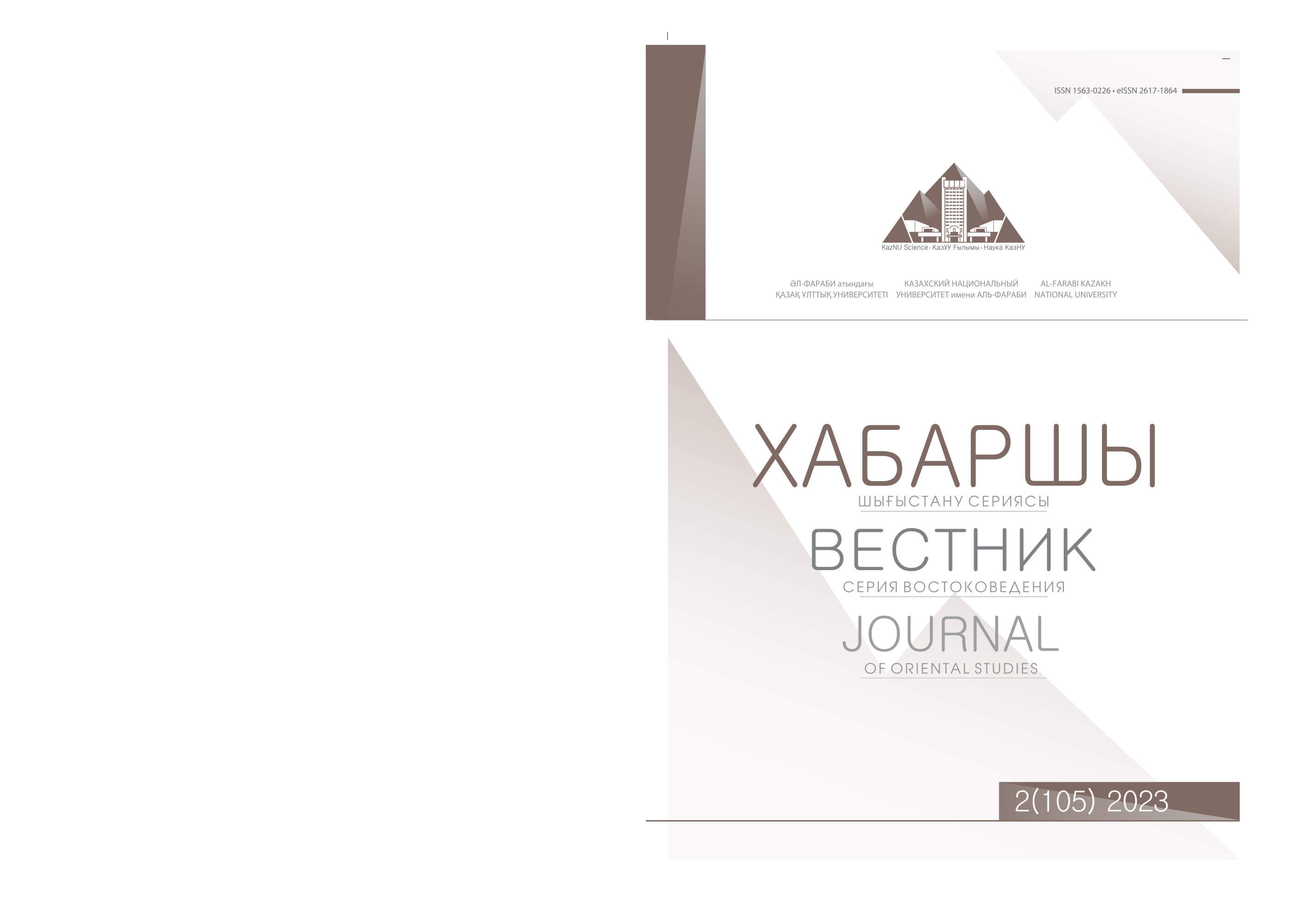LANGUAGE AND EMOTION: EMOTIVE UNITS IN TURKIC LANGUAGES AND THEIR CULTURAL AND LINGUISTIC FEATURES
DOI:
https://doi.org/10.26577/JOS.2023.v105.i2.05Abstract
In this article, the language units representing the emotive negative inner state such as "regret, sadness, longing, grief" in the 11th century work "Qutty Bilik" epic, which is common to Turkic languages and culture, were studied. Also, the ways of internal state of mind and parameters of general emotions are considered in it. To date, emotives have been studied in separate works in Turkic languages, but for the first time, a comparative study of Turkic languages through a text common to the Turkic people and its translations has been undertaken from a historical and cultural point of view. The purpose of the study is to determine the typical parametric features of emotiveness in the Oghuz-Kipchak linguistic and cultural space by comparing the emotive vocabulary of “Qutty Bilik” and its translations in English, Turkish, Kazakh, and Azerbaijani languages. The main object of research is the emotive vocabulary in the work "Qutty Bilik". The article analyzes the features of the equivalence of emotive vocabulary and the selection of emotive units when the work is translated into different languages. In order to achieve the goal of the research, in addition to comparative historical and descriptive methods, semantic analysis of emotives in Turkic languages, psycholinguistic, linguistic and cultural analysis, lexical analysis, classification into groups, description, statistical analysis methods were used. The characteristics of the emotive state in the original text in modern Turkic languages are defined and transmitted to the next reader, the competence of the languages in the same linguistic and cultural space to perceive and convey emotions, and the emotive world of each language representative (in this case, the translator) are shown.




